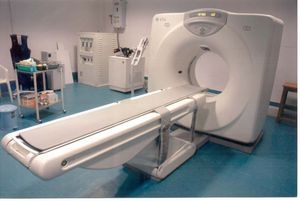A recent perspective published in the New England Journal of Medicine commented on the safety of CT scans, equipment, and procedures used in the majority of hospitals in the United States. It has been known for decades that certain levels of radiation exposure can lead to the development of cancer. What is not known is the risk of cancer associated with the use of CT scans each year in the United States. It is estimated that over 70 million CT scans were done on patients in 2007 alone. A past study published in the Archives of Internal Medicine concluded that 29,000 cancers were caused by all of the CT scans completed in 2007.
The author of this article, Dr. Rebecca Smith-Bindman, stated that the risk of CT scanning could as a high as a one in eighty risk of developing cancer with each. This is a huge risk considering the large number of CT scans performed each year in the United States, and would work out to about 900,000 cases of cancer caused each year due to the use of CT scans.
The article then outlines a number of prudent steps which can be taken to reduce the risk posed by CT scans. These include more judicious use of CT scans, and mechanical and software safety features which prevent the technician from accidentally giving too much radiation for a certain scan.
However, the FDA only lightly regulates scanning equipment, and not how scanners are used or how they are actually performing in the real world. This has largely been left up to radiologists, however, the American College of Radiology has disputed past research studies showing that CT scans produce cancer. Obviously, were CT scans to be found to be producing 900,000 cases of cancer a year, this could potentially result in a drastic decrease in the use of this imaging technique and hence would be a salary loss for radiologists who depend on the interpretation of such scans for their livelihood.
Dr. Smith-Bindman argues for physician to more be more selective about the use of CT scanning. However, much of today’s modern medical practice has become dependent, and perhaps overly dependent, on the use of CT scans. This is because when test results are nonspecific or when physical exam findings are ambiguous, the CT scan and the radiologist’s expert opinion appear to offer concrete results. In addition, the increased number of lawsuits has motivated some physicians to order CT scans for some patients more out of a concern to protect themselves legally than for diagnostic information to help the patient.
Nonetheless, many CT scans do help doctors make important decisions and are critical in certain patient populations such as surgical patients. Most likely calls for reduced use of CT scans will not lead to a drastic reduction in the number of CT scans ordered each year, as in a way the genie is out of the bottle. Before the use of CT scans, doctors have to rely upon physical examination findings in combination with laboratory tests in order to make a clinical decision. These days a big question doctors have concerning their hospitalized patients is “What did the CT scan show?” Therefore, a drastic reduction in the use of CT scans would be hindered by a dependence on this technology.
So what could be done?
If the genie can’t be put back in the bottle, then maybe it’s time to build a better genie. Advanced X-Ray detectors may one day make it possible for CT scans to use much less radiation than the amount used today, perhaps by a factor of ten or more. It would be expected that this decrease in radiation dose would also be correlated with a decrease in the number of cancers caused by today’s CT machines.
Perhaps a novel imaging modality could invented which does not rely upon ionizing radiation such as X-Rays. With the yearly increases in computing power this might allow for a previously investigated imaging modality, such as ultrasound, to be made practical.
MRI scans, which use powerful magnets and electromagnetic waves are believed to be very safe emit as they emit a different type of radiation than CT scans. The big drawback is that the MRI scans cannot be used in some patients, and the procedure may take an hour. However, next generation MRI scanners, which can take a scan in minutes instead of hours, are being developed and in the coming years may replace the almost routine use of CT scans in hospitals today. Many doctors recommend that pregnant women take the time to get the MRI scan, instead of the CT scan. And MRI scans used for mammography, instead of traditional X-Rays, may decrease the number of breast cancers by a modest amount.
Sources:
http://en.wikipedia.org/wiki/X-ray_computed_tomography
http://www.medscape.com/viewarticle/714025
http://content.nejm.org/cgi/content/full/NEJMp1002530
http://www.sciencedaily.com/videos/2006/1211-safer_scans_for_pregnant_women.htm



